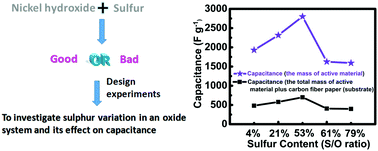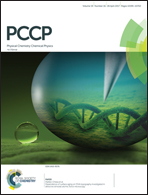Remarkable improvement in supercapacitor performance by sulfur introduction during a one-step synthesis of nickel hydroxide†
Abstract
Composition control by introducing sulfur during a one-step synthesis of nickel hydroxide is successfully achieved using our unique design. And it has been demonstrated to be an effective strategy by increasing the specific capacitance by more than 40%. A systematic study reveals that as the sulfur (S) to oxygen (O) ratio is increased, the specific capacitance first increases and then decreases. At a S to O ratio of approximately one, the composite outperforms other ratios, delivering a remarkable capacitance of 2801 F g−1 at 2 A g−1. More importantly from the customer point of view and viability for practical applications, a high specific capacitance of 457 F g−1 is achieved per total weight of the active material plus substrate. The energy density per weight of the active materials reaches a high value of 61 Wh kg−1. The energy density per total weight of the active material and substrate reached a very high value of 34 Wh kg−1. A detailed study on the role of S is performed experimentally and theoretically. The results reveal for the first time that sulfur itself does not contribute to the increase in specific performance, and the significant improvements in capacitance and energy density can be attributed to sulfur induced refinement in clusters and morphology.



 Please wait while we load your content...
Please wait while we load your content...